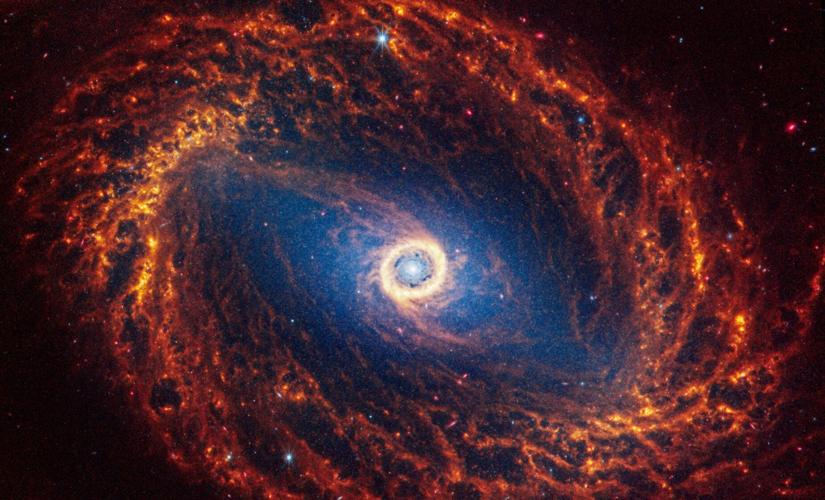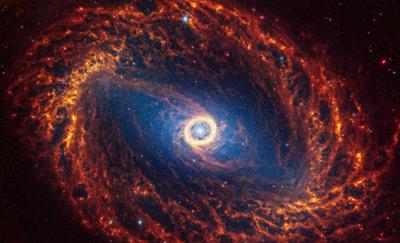NASA’s James Webb Space Telescope has released a trove of new images depicting 19 spiral galaxies in more detail than ever before, enabling researchers a peek into the birth-process of stars and the formation of galaxies.
Described as the highest resolution near and mid-infrared images ever taken of these galaxies, , the images were taken as part of a larger project supported by more than 150 researchers around the world (including Canada) called the Physics at High Angular resolution in Nearby GalaxieS (PHANGS) program.
The nearest galaxy imaged, named NGC 5068, is about 20 million light years away from Earth, .

The space telescope imaged 19 different galaxies previously captured by the Hubble Space Telescope, but with dust clouds and nascent stars now visible.
Space Telescope Science InstituteJames Webb galaxy images provide insight into the life cycles of stars
Janice Lee, a project scientist for strategic initiatives at the Space Telescope Science Institute in Baltimore, said in a release the new images are “mind-blowing even for researchers who have studied these same galaxies for decades. Bubbles and filaments are resolved down to the smallest scales ever observed, and tell a story about the star formation cycle.ÔÇŁ
The 19 galaxies were previously captured by NASA’s Hubble Space Telescope, originally launched in 1990, using visible and ultraviolet light. As a result, the older technology wasn’t able to capture certain stars, whose light was swallowed by vast clouds of dust.
In contrast, the James Webb telescope’s Mid-Infrared Instrument is capable of depicting this previously invisible dust in glowing colours┬áÔÇö as well as the bright red seeds of nascent stars, still encased in and feeding off the celestial dust that spawned them.
“These are where we can find the newest, most massive stars in the galaxies,┬áErik Rosolowsky, a professor of physics at the University of Alberta, .
Mature stars, imaged using the telescope’s Near-Infrared Camera, appear instead as millions of blue specks. Because galaxies are believed to grow from the inside out, younger stars are more likely to exist on the outer reaches of the star system while older stars congregate near the centre, appearing as a bright blue blob.

Red diffusion spikes in the centre of a galaxy may denote an active supermassive black hole, as seen here with galaxy NGC 7496.
Space Telescope Science InstituteIn other images, the galaxy core appears awash in pink and red spikes of light; , these may denote an active supermassive black hole.
Surprisingly, the researchers also noted large, spherical holes in the dust clouds they believe may have been created by exploded stars that blasted a chunk out of the interstellar medium, according to NASA.
An abundance of data
Researchers intend to start with the documenting and analysis of the unprecedented number of stars now illuminated by Webb, which may provide a more holistic view of the star life cycle, NASA said in its release.
With space dust now brightly illuminated, scientists will also be able to study the spacing of gas clouds in the galaxies’ arms and glean insights into how galaxies start, maintain and shut off the creation of new stars.

An image of galaxy NGC 628. Scientists can measure the distribution of gas clouds in its arms to glean new insights about galaxy formation.
Space Telescope Science InstituteIn addition to the reams of new information, the PHANGS team also released the largest catalogue to date including roughly 100,000 star clusters.
“The amount of analysis that can be done with these images is vastly larger than anything our team could possibly handle,” Rosolowsky said. “WeÔÇÖre excited to support the community so all researchers can contribute.”


























